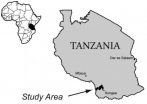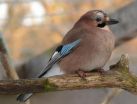(Press-News.org) HOUSTON – (Dec. 4, 2012) –The ability of the eye of a fruit fly (Drosophila melanogaster) to respond to light depends on a delicate ballet that keeps the supply of light sensors called rhodopsin constant as photoreceptors turn on and off in response to light exposures, said researchers from Baylor College of Medicine (www.bcm.edu) and the Jan and Dan Duncan Neurological Research Institute (http://www.nri.texaschildrens.org/) at Texas Children's Hospital in an article that appears online in the journal PLOS Biology (http://www.plosbiology.org/home.action).
The gene Crag is key for the trafficking of rhodopsin because it is a guanine exchange factor that activates a protein called Rab11, said Dr. Hugo Bellen, professor of molecular and human genetics and director of the Program in Developmental Biology at BCM (http://www.bcm.edu/db/).
"When a photon hits the membrane, it activates a protein called rhodopsin," said Bellen, also a Howard Hughes Medical Institute investigator. "Exposure to another wavelength of light converts the metarhodopsin back into rhodopsin. However, the molecular switch can be broken through various causes, and the protein is then stuck in the active form, metarhodopsin."
That can have severe consequences for the photoreceptor. Hence, metarhodopsin needs to be cleared and freshly made rhodopsin needs to replenish the pool to maintain photoreceptor integrity, said Bo Xiong (http://flypush.imgen.bcm.tmc.edu/lab/people/bo.php), a graduate student in Bellen's laboratory.
The work led by Xiong suggests that photons increase the calcium influx which in turn activates a protein called calmodulin, which then activates Crag. Crag activates the Rab11 protein that allows transport of vesicles (little bubbles) that are loaded with freshly made rhodopsin. The secretion of the rhodopsin-loaded vesicle into the membrane resets the mechanism so that the photoreceptors can once again capture light.
However, if the Crag is mutated, Rab11 is not activated and the newly synthesized rhodopsin accumulates in the cytoplasm of the cell, resulting in toxicity and leading to the death of the photoreceptors.
Interestingly, flies with this Crag mutation do not suffer photoreceptor degeneration when they are left in the dark.
"If they are kept in constant darkness, there is no photoreceptor damage," said Xiong. If you keep the flies in alternating light and dark for 14 days, the photoreceptors degenerate.
"What happens is a complete breakdown of vesicular trafficking. The whole cytoplasm becomes loaded with rhodopsin and aberrant vesicles and structures. The cell tries to get rid of it these aberrant structures via lysosomes and autophagosomes (the natural clean-up mechanism of cells). As a consequence, the photoreceptor light-sensing membrane becomes smaller as it is not replenished with freshly made rhodopsin."
Crag is a member of the DENN family proteins, which are critical for vesicular trafficking. (Tiny vesicles or bubble-like structures carry proteins from one compartment of the cell to the other in a process called trafficking.)
Xiong and colleagues discovered that Crag modifies Rab11. Indeed, overexpressed Rab11 in the Crag mutant photoreceptor reduced the photoreceptor degeneration. It is likely that this mechanism is conserved in vertebrates as the human ortholog of Crag rescues the fly Crag mutant phenotypes.
###Others who took part in this research include Vafa Bayat, Manish Jaiswal, Ke Zhang, Hector Sandoval, Wu-Lin Charng, Tongchao Li, Gabriela David, Lita Duraine and Shinya Yamamoto, all of BCM; and Yong Qi Lin and G. Gregory Neely of Garvan Institute of Medical Research in Sydney, New South Wales, Australia.
Xiong was supported by the Houston Laboratory and Population Science Training Program in Gene-Environment Interaction from Burroughs Wellcome Fund (BWF Grant No.1008200). Bayat and David received support from DB Program training grant T32 HD055200.Yamamoto was supported by a fellowship from the Nakajima Foundation. Sandoval received support from REACH IRACDA Fellowship 5K12GM084897.
For more information on basic science at Baylor College of Medicine, please go to www.bcm.edu/fromthelab.
Crag keeps the light 'fantastic' for photoreceptors
2012-12-05
ELSE PRESS RELEASES FROM THIS DATE:
Learning to control brain activity improves visual sensitivity
2012-12-05
Training human volunteers to control their own brain activity in precise areas of the brain can enhance fundamental aspects of their visual sensitivity, according to a new study. This non-invasive 'neurofeedback' approach could one day be used to improve brain function in patients with abnormal patterns of activity, for example stroke patients.
Researchers at the Wellcome Trust Centre for Neuroimaging at UCL used non-invasive, real-time brain imaging that enabled participants to watch their own brain activity on a screen, a technique known as neurofeedback. During the ...
Semen concentration and quality fell in French men between 1989 and 2005
2012-12-05
New research shows that the concentration of sperm in men's semen has been in steady decline between 1989 and 2005 in France. In addition, there has been a decrease in the number of normally formed sperm. The study is published online today (Wednesday) in Europe's leading reproductive medicine journal Human Reproduction [1].
The study is important because, with over 26,600 men involved, it is probably the largest studied sample in the world and although the results cannot be extrapolated to other countries, it does support other studies from elsewhere that show similar ...
Put the kettle on? When tea drinkers were viewed as irresponsible as whiskey drinkers
2012-12-05
Poor women who drank tea were viewed as irresponsible as whisky drinkers in early 19th-century Ireland, new research by Durham University has unearthed.
Critics at the time declared that the practice of tea drinking – viewed as a harmless pastime in most past and present societies – was contributing to the stifling of Ireland's economic growth, and was clearly presented as reckless and uncontrollable.
Women who drank tea wasted their time and money, it was said, drawing them away from their duty to care for their husbands and home. It was felt this traditionally female ...
More babies survive premature birth, but serious health problems unchanged
2012-12-05
Research published on bmj.com today suggests that although more babies survived shortly after extreme preterm birth in England in 2006 compared with 1995, the number with major conditions on leaving hospital remained largely unchanged.
A second study, also published today, shows some improvement in the number of extremely preterm children who survived without disability at 3 years of age, but no change in the rate of serious health and developmental problems over the same 10-year period.
Taken together, these two large studies (known as the EPICure studies) suggest ...
Gaps in life expectancy between rich and poor set to increase over next 10 years
2012-12-05
Health inequalities between England's richest and poorest areas have widened in the ten years between 1999 and 2008. Researchers warn, in a study published today on bmj.com, that over the next ten years, we may experience smaller increases in life expectancy than in the past decade and health inequalities may rise at an even faster rate.
Studies have shown that economic decline is associated with long term negative health impacts and the current climate has raised concerns about this. Between 1999 and 2008 the target (set by the government) for reducing the gap in life ...
First measurements made of key brain links
2012-12-05
PROVIDENCE, R.I. [Brown University] — Inside the brains of mice and men alike, a relatively big football-shaped region called the thalamus acts like a switchboard, providing the prefrontal cortex, the part that does abstract thinking and decision-making, with most of its information. The thalamus's responsibility even includes helping the prefrontal cortex to maintain consciousness and arousal.
Essential as this "thalamocortical" partnership is, neuroscientists have understood very little about the connections coming from a matrix of cells in the so-called "nonspecific ...
Protected 'power naps' prove helpful for doctors in training to fight fatigue
2012-12-05
PHILADELPHIA – New research from the Perelman School of Medicine at the University of Pennsylvania and the Philadelphia VA Medical Center indicates that the implementation of protected sleep periods for residents who are assigned to overnight shifts in a hospital represent a viable tool in preventing fatigue and alleviating the physiological and behavioral effects of sleep deprivation among these doctors in training. The new results will be published in the December 5th edition of the Journal of the American Medical Association (JAMA).
"Within the last two years, we've ...
New evidence on how compound found in red wine can help prevent cancer
2012-12-05
University of Leicester scientists will present groundbreaking new evidence about how a chemical found in red wine can help prevent cancer on Wednesday, December 5.
Experts from around the world are set to attend Resveratrol 2012, a major conference at the University which will assess the latest advances in the study of resveratrol – a compound found in the skins of red grapes.
The conference will feature new findings based on the last two years of research, which show how the chemical can help prevent cancer, heart disease and diabetes.
The event follows the first ...
Scientists find oldest dinosaur – or closest relative yet
2012-12-05
Researchers have discovered what may be the earliest dinosaur, a creature the size of a Labrador retriever, but with a five foot-long tail, that walked the Earth about 10 million years before more familiar dinosaurs like the small, swift-footed Eoraptor and Herrerasaurus.
The findings mean that the dinosaur lineage appeared 10 million to 15 million years earlier than fossils previously showed, originating in the Middle Triassic rather than in the Late Triassic period.
"If the newly named Nyasasaurus parringtoni is not the earliest dinosaur, then it is the closest relative ...
Hushed hoarders and prying pilferers
2012-12-05
VIDEO:
Eurasian jays change strategies to prevent others from stealing food and to improve their chances of absconding with other birds’ caches.
Click here for more information.
In order to prevent other birds from stealing the food they are storing for later, Eurasian jays, a type of corvid, minimizes any auditory hints a potential pilferer may use to steal their cache (food that is buried for later use). The new research was published today, 05 December, in the journal ...


